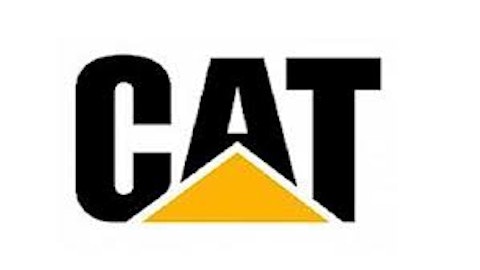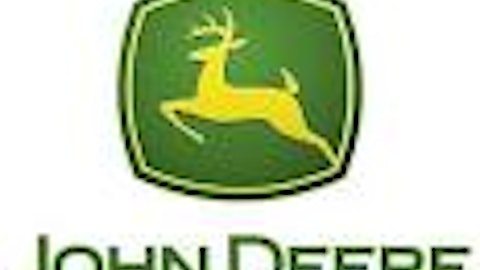Only time will tell the difference between a fad and a trend. Similarly, brands’ enduring power is measured in decades and centuries instead of days. Deere & Company (NYSE:DE), the largest manufacturer of agricultural equipment globally with a history spanning more than a century, bears testimony to that.
Why this company enjoys pricing power

Firstly, brand building takes a tremendous amount of time and effort. The Deere & Company (NYSE:DE) brand has the advantage of time over its competitors and new entrants, with a legacy extending 175 years back to 1837. Similar to how Coca-Cola is synonymous with coke, Deere & Company (NYSE:DE)’s products have been the de facto choice for farmers when it comes to agricultural equipment.
Secondly, the nature of farming suggests that the harvesting period might be short, but nothing should go wrong during that period. Any downtime associated with the usage of inferior equipment is totally unacceptable for the farmers. Deere & Company (NYSE:DE)’s extensive network of dealer locations provide its customers with convenient access to repair and maintenance services for their equipment.
Operational efficiency edge should not be ignored
It is easy to focus on competitive advantages and growth prospects, and ignore the importance of operational efficiency in running a profitable business.
Many fast growing companies, in terms of revenues, end up reporting losses or lackluster profits because they are simply spending more to generate sales. In contrast, Deere & Company (NYSE:DE) has consistently worked on enhancing its productivity. It increased its net sales per employee by almost five times over a span of three decades, from $100,000 in 1982 to $500,000 in 2012.
Working capital efficiency is another critical component of operational excellence, with increasing receivables relative to sales being a red flag for many investors. Deere managed to raise receivables turnover from 5.8 in fiscal 2003 to 10.2 in fiscal 2012, essentially doubling the amount of sales with the same level of receivables.
Cash is king only if shareholders are rewarded
Deere generated positive cash flows from operations in every single year in the past decade, and has historically rewarded shareholders with the excess cash flow in the form of dividends and share buybacks.
Since 2004, it has repurchased about 164 billion shares at a total cost of $6.4 billion. The fact that the historical average repurchase price of $57.70 is well below the current share price in the mid-80s, speaks well about the value-accretive nature of the buybacks. As of the end of April, Deere still has about $2.2 billion remaining from its 2008 share repurchase authorization, implying room for further capital return.
Deere also has an uninterrupted dividend payment track record since 1997, and has a target payout ratio representing 25%-35% of mid-cycle earnings. It currently sports a decent 2.4% dividend yield.
Future outlook
Deere delivered record quarterly revenues and earnings in the second quarter of fiscal 2013. Net sales and operating profit from equipment operations rose by 9.0% and 9.3% year-on-year to approximately $10.9 billion and $1.7 billion, respectively. Management is guiding for a 5% and 8% year-on-year growth in full year fiscal 2013 equipment sales and net income on the back of secular trends pertaining to global food and infrastructure demand.

